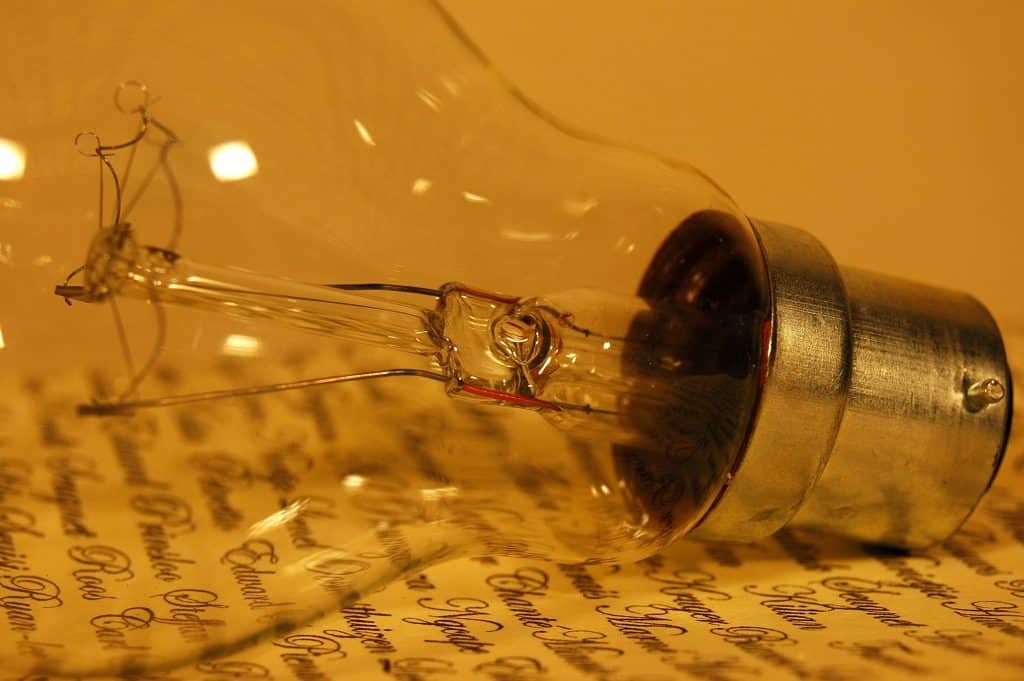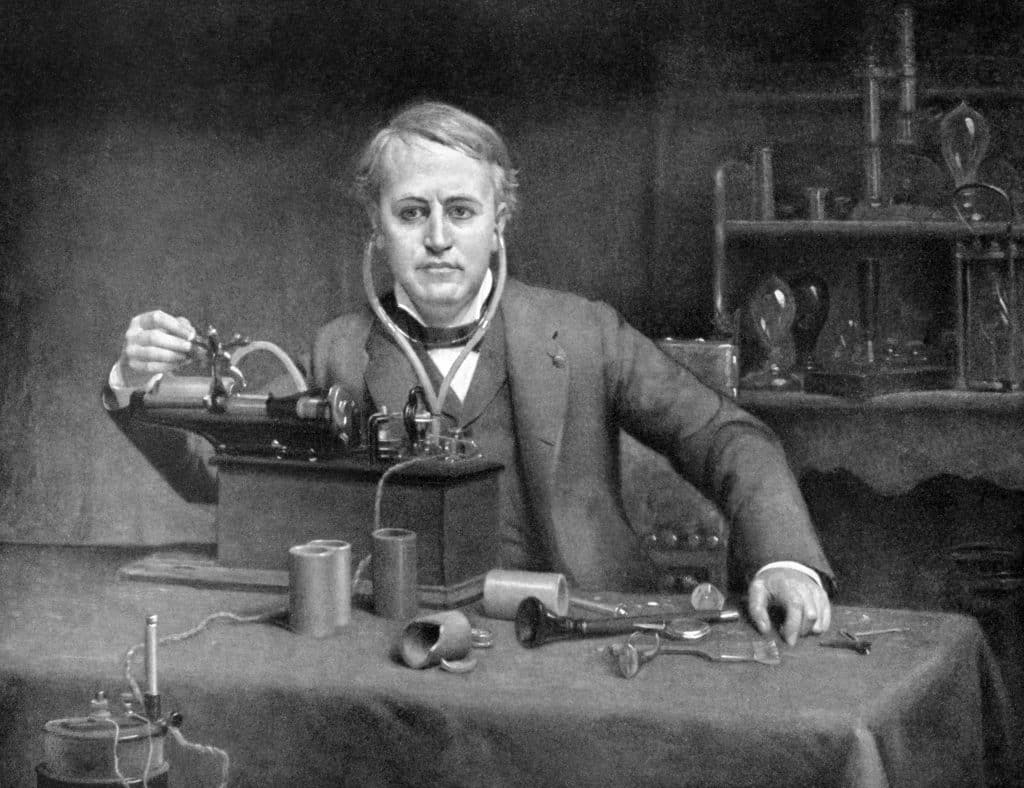Children around the world are taught that Thomas Edison invented the filament bulb in their science or physics classes. Recently, claims that Edison only refined an existing invention have been doing the rounds on the internet – often together with statements that it was in fact Nikola Tesla who invented the electric light bulb.
The truth lies somewhere in between – and shows how important it is to know how to market a product once it has been invented.
Filament light bulb
The story of electric light probably starts with the experiments of Italian natural philosopher Alessandro Volta, which demonstrated that it was possible to generate an electric current with metals. As for electric light proper, British scientist Sir Humphrey Davy managed to produce it in 1802 but it was little more than a prototype as the light was not constant. Joseph Wilson Swan had more success in 1850 but his bulb burned out too quickly to have any practical use. This was rectified in 1878, when he began using different materials.
In 1879, Swan patented his invention – and sold it to Edison. Edison then set out to improve the reliability of the filament bulb and to bring production costs down. With the extension of power grids, the Edison bulb could be used across the world for a relatively cheap price.
While Nikola Tesla did not invent the light bulb, he did experiments with fluorescent lighting around the same time – but fluorescent light tubes would not be commercially mass produced until the 1930s. Tesla’s relationship to the light bulb instead comes from his invention of AC power, which brought a reliable power supply to homes (and consequently created a market for light bulbs).
Though the light bulb owes its rapid and widespread adoption to Edison, he did not always display the same commercial awareness. The phonograph – the forerunner of the gramophone and record player – is another of Edison’s famous inventions, but here his role was more similar to the one of Swan. While being an apparatus that could record and play sound, Edison’s phonograph used tin foil – which deteriorated after a single playback. Having no realistic lifetime beyond a few playbacks, Edison failed to name a commercial use for his invention. Recording your voice and playing it back might be good party entertainment but was not enough to convince consumers or café owners to buy a phonograph.

Thomas Edison working on this phonograph
The solution lay in making recordings more durable – which kick started the music recording business. It was not Edison but a group of businessmen and scientists that included Alexander Graham Bell (inventor of the telephone) who took the phonograph a step further by making recordings on wax, which gave up to 20 playbacks. While this seems limited from today’s perspective, it was a game changer in the 1890s as café and saloon proprietors considered 20 playbacks sufficient and were happy to invest in phonographs – instead of self-playing pianos. Displaying his business acumen, Edison still managed to profit from the wax innovation, as his early patents and renown encouraged Bell and the others to reach a patent-sharing agreement with Edison.
The story of Edison has two important takeaways. First, commercial awareness is as important as scientific skills, since without it, a prototype might be confined to a lab. Secondly, not everyone gets it right every time – as shown by Edison both being the man who designed a commercially marketable light bulb, but did not realize what was needed to make the phonograph successful.
